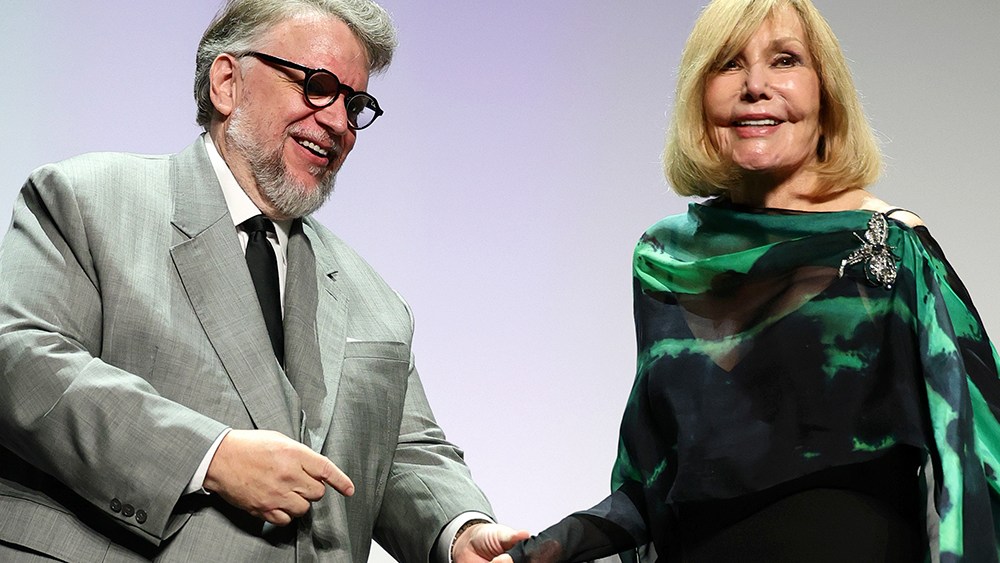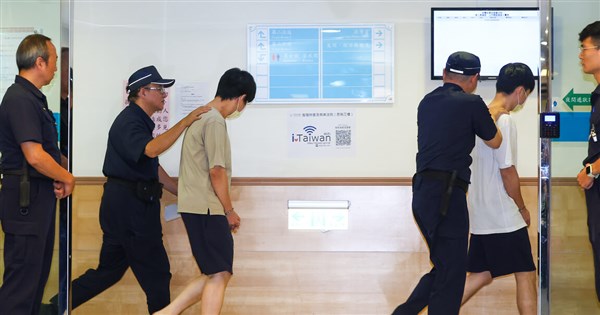Introduction
Dry eye disease (DED) is a multifactorial disorder of the ocular surface characterized by loss of tear film homeostasis. Common symptoms include eye fatigue, foreign body sensation, and ocular dryness.1 Globally, the prevalence of DED ranges from 5% to 50%, depending on the population and diagnostic criteria used.2 In Asia, the estimated prevalence of DED across various populations was approximately 20.1%,3 while studies reported a prevalence of 13% in Brazil and 41% in Mexico.4 Although DED has traditionally been more common in adults, its prevalence among children in China has increased in recent years, likely due to environmental changes and evolving lifestyle patterns. Owing to differences in survey methods, geographic regions, and diagnostic standards, the estimated prevalence of pediatric dry eye varies from 6.6% to 20%,5 a relatively high rate by global comparison. The etiology of DED in children and adolescents is multifactorial, involving environmental exposures, underlying health conditions, and dietary habits. 6 Among lifestyle-related contributors, disruption of the circadian rhythm has also been implicated in the development of dry eye. 7
High-quality sleep is essential for maintaining overall health and plays a critical role in supporting both physical and mental well-being.8 Healthy sleep is characterized by subjective satisfaction, appropriate timing of sleep and wakefulness, sufficient duration, high efficiency, and sustained alertness during the day.9 Increasing evidence suggests that sleep disorders have become a major global public health concern, with approximately 150 million individuals affected worldwide.10 Matricciani et al11 analyzed data on sleep duration from 690,747 children aged 5 to 18 years across 20 countries between 1905 and 2008, revealing that children and adolescents now sleep over one hour less per night on average. This long-term declining trend has been observed in regions including Asia, Canada, the United States, and Europe. In mainland China, the prevalence of sleep problems among children has also risen significantly over the past two decades, currently affecting nearly 40% of school-aged children.12 Recent studies have confirmed a positive association between insufficient sleep and the prevalence of DED.13 For example, Hanyuda et al14 reported that individuals with shorter sleep duration had a higher prevalence of dry eye. Another study found that individuals who slept fewer than five hours per night had a 20% higher prevalence of dry eye compared to those who slept more than six hours.15 Furthermore, a bidirectional relationship between sleep and DED has been suggested. Not only inadequate sleep increased the risk of dry eye, but patients with DED also experienced poorer sleep quality and longer sleep latency, highlighting a reciprocal influence between the two conditions.16
Social jetlag, a form of chronic circadian rhythm disruption, is defined as the difference between the midpoint of sleep on school or workdays and that on free days, such as weekends—that is, the misalignment caused by discrepancies in sleep onset time, wake time, and sleep duration between weekdays and weekends.17 Based on the Morningness-Eveningness Questionnaire (MEQ), circadian typology can be categorized into three chronotypes: morning type (M-type), intermediate type (N-type), and evening type (E-type).18 This phenomenon is commonly observed among children and adolescents,19 and research suggests it can emerge as early as infancy, even in children aged 0 to 6 years.20 As students advance to higher grade levels, academic demands often lead to more pronounced discrepancies in sleep patterns between weekdays and weekends.21 For example, one study reported that the average social jetlag among adolescents in the United States reached up to 2.5 hours.22 Individuals with high levels of social jetlag often stay up late on weekends, resulting in increased screen exposure and reduced outdoor activity during the day—behavioral patterns that are recognized risk factors for dry eye. Social jetlag reflects a misalignment between the endogenous biological clock and the socially imposed sleep–wake schedule. This circadian disruption may impair lacrimal gland function, indicating that social jetlag exerts a combined influence through both behavioral and physiological mechanisms.
Despite growing interest in sleep and ocular health, current research offers limited evidence on the relationship between social jetlag and dry eye. Therefore, this study aims to investigate the prevalence of dry eye among children and adolescents aged 9 to 19 years in Fengyang County, Anhui Province, and to evaluate their sleep duration and social jetlag patterns. Furthermore, it seeks to analyze the associations and potential interaction effects between these sleep-related factors and the risk of dry eye. The findings are expected to provide scientific evidence supporting the development of sleep-based interventions for the prevention of dry eye and the promotion of ocular health in the pediatric population.
Methods
Study Population
Between November and December 2023, a stratified random sampling method was employed based on school level and urban–rural distribution. One primary school, two junior high schools, and four senior high schools were respectively selected from rural and urban areas in Fengyang County, Chuzhou City, Anhui Province, China. Within each selected school, one class was randomly chosen from grades 4–6, 7–9, and 10–12. A total of 2341 students aged 9–19 years underwent dry eye examinations and completed a structured questionnaire. Students below Grade 4 and those with a history of ocular surgery, ocular trauma, glaucoma, conjunctivitis, or who declined to participate in the study were excluded. After further excluding participants with incomplete questionnaires or missing dry eye assessments, a total of 1993 students were included in the final analysis. The present study was approved by the Medical Ethics Committee of Anhui Medical University (YX2022058) and was carried out according to the tenets of the declaration of Helsinki. All participants (or their legal guardians) provided written informed consent prior to the commencement of the study. To protect participant privacy, all data were anonymized and used solely for the purposes of this research.
Dry Eye Assessment and Diagnosis
Dry eye evaluation in children and adolescents was conducted by the same trained professional in a clinical setting. Tear film breakup time (TBUT) was used as the primary parameter for determining the presence of dry eye. A fluorescein sodium strip was moistened with one drop of sterile saline. The strip was gently applied to the subject’s lower conjunctival sac. Participants were instructed to blink several times and then maintain a primary gaze. Using a slit-lamp biomicroscope with cobalt‑blue illumination and a wide slit beam, the examiner recorded the time from the last blink to the appearance of the first dark spot on the tear film. This interval was recorded as the tear film breakup time (TBUT). Students also completed the Dry Eye Questionnaire‑5 (DEQ‑5).23 The Cronbach’s coefficient of the DEQ‑5 was 0.843, representing a high degree of internal consistency. Dry eye was diagnosed based on the 2013 diagnostic criteria from the Chinese Ophthalmological Society Cornea Disease Group. Diagnosis required at least one subjective symptom (dryness, foreign-body sensation, burning, fatigue, discomfort, or visual fluctuation) and a TBUT of ≤ 5 s.
Sleep Duration
The children’s and adolescents’ bedtime and wake‐up time on school days and weekends were measured using a self‐reported questionnaire. School‐day mean daily sleep duration and weekend mean daily sleep duration were calculated. The average daily sleep duration was determined by the formula: (average daily sleep duration on school days × 5 + average daily sleep duration on weekends × 2) /7. Previous studies have indicated that a sleep duration ≥ 9 hours may be considered protective against dry eye.24 Based on this threshold, participants were classified into two groups: < 9 h and ≥ 9 h of sleep.
Social Jetlag
Bedtime and wake‑up times on school days and weekends for children and adolescents were collected using self‑reported questionnaires. For each participant, the midpoint of sleep was calculated separately for school days (MSW) and weekend days (MSF) as wake‑up time minus half of the nighttime sleep duration. Social jetlag (SJL) was then defined as the absolute difference between the weekend and school‑day midpoints of sleep: ie, SJL = |MSF − MSW|. This approach is widely used in chronobiological research to quantify circadian misalignment. Currently, there is no universally accepted standard for defining social jetlag. Many studies use a ≥ 1 h threshold as the cutoff.25 For this reason, participants in the present study were classified into two groups: those with social jetlag < 1 h and those with ≥ 1 h.
Covariates
Demographic data including sex, age, residential setting, monthly household income per capita, and parental education level were collected using a self-developed questionnaire. Dry eye–related risk behaviors, encompassing contact lens use, artificial tear usage, duration of outdoor exposure, and screen time on both school days and weekends were also assessed. Sleep quality was assessed by an item from Pittsburgh sleep quality index.
Statistical Analysis
A database was established using EpiData 3.1 for questionnaire entry. Statistical analyses were performed using SPSS 23.0 software. Differences in sociodemographic characteristics between the DED and non-DED groups were assessed using chi-square tests for categorical variables and independent-samples t-tests for continuous variables. DED (yes = 1, no = 0) was treated as the dependent variable, and sleep duration and social jetlag were the primary independent variables. Given that sleep quality has been shown to play a crucial role in regulating lacrimal gland function and maintaining ocular surface immune balance, Model 2 in the logistic regression analysis included sleep quality as a covariate to control for its potential confounding effects on the relationship between sleep duration, social jetlag, and DED. Binary logistic regression models were used to examine the independent and interactive associations of sleep duration and social jetlag with the risk of DED A two-sided p-value of less than 0.05 was considered statistically significant.
Results
Participant Characteristics
Among 1993 participants, the prevalence of dry eye was 51.0%. Stratified by school level, the rates were 33.3% (81/243) in primary school, 51.8% (357/689) in middle school, and 54.5% (578/1,061) in high school. These differences were statistically significant (P < 0.05). Female students had a higher prevalence of DED than male students (Table 1).
|
Table 1 Comparison of Dry Eye Disease Prevalence Across Sociodemographic and Ocular Characteristics in Children and Adolescents (N = 1993)
|
Comparison of Dry Eye Disease Prevalence by Sleep Duration and Social Jetlag Groups
The prevalence of DED was significantly higher in the group with sleep duration < 9 h compared to those with ≥ 9 h, and likewise, participants with social jetlag ≥ 1 h demonstrated a significantly higher rate of DED compared to those with < 1 h (both P < 0.05) (Table 2).
 |
Table 2 Prevalence of Dry Eye Disease by Sleep Duration and Social Jetlag Groups Among Students Aged 9–19 Years
|
Binary Logistic Regression Analysis of Independent Associations of Sleep Duration and Social Jet Lag with Dry Eye Disease in Children and Adolescents Aged 9–19 Years
Binary logistic regression models were used to examine the associations of sleep duration and social jetlag with DED in children and adolescents. In Model 1 (unadjusted), sleep duration < 9 hours was significantly positively associated with DED (OR= 1.35; 95% CI:1.10–1.65), and social jetlag ≥ 1 hour was also significantly associated with DED (OR=1.28; 95% CI:1.07–1.53). After adjusting for sleep quality in Model 2, these associations remained statistically significant (P < 0.05).
Binary Logistic Regression Analysis of the Interaction Between Sleep Duration and Social Jetlag on Dry Eye Disease Among Children and Adolescents Aged 9–19 Years
Binary logistic regression models were employed to assess the association of the interaction between sleep duration and social jetlag with DED in children and adolescents. In Model 1 (unadjusted for confounders), only the group with sleep duration ≥ 9 h combined with social jet lag ≥ 1 h showed a significant positive association with DED (OR=1.73, 95% CI: 1.32–2.27). After adjusting for sleep quality in Model 2, this association remained statistically significant (OR=1.77, 95% CI: 1.35–2.33). This effect size was visualized using forest plots (Figures 1 and 2), which clearly depict the odds ratios and confidence intervals across the four sleep pattern combinations under both unadjusted and adjusted models.
 |
Figure 1 Forest plot showing the associations of sleep duration, social jetlag, and their interaction with dry eye disease.
Abbreviations: OR, odds ratio; CI, confidence interval; Ref, reference group; h, hours.
Notes: Model 1: Unadjusted logistic regression. ORs and 95% CIs are shown for each subgroup. The reference group was participants with ≥9 h of sleep and <1 h of social jetlag.
|
 |
Figure 2 Forest plot showing the associations of sleep duration, social jetlag, and their interaction with dry eye disease.
Abbreviations: OR, odds ratio; CI, confidence interval; Ref, reference group; h, hours.
Notes: Model 2: Adjusted for sleep quality. ORs and 95% CIs are shown for each subgroup. The reference group was participants with ≥9 h of sleep and <1 h of social jetlag.
|
Discussion
This study is the first to demonstrate the statistical association of sleep duration and social jet lag with DED in children and adolescents. The prevalence of DED in this study was notably higher at 51%, compared with previous domestic questionnaire-based and clinic-verified cross-sectional surveys of primary and secondary students, which reported rates of 13.86%–21.37%.26,27 This discrepancy may be attributed to regional differences, as most participants in our study were from townships, and to methodological variations in dry eye assessment across studies.
The present study found that sleep duration of less than 9 hours significantly increased the risk of DED in children and adolescents. Numerous prior studies have reported an association between sleep duration and dry eye. One study indicated that the prevalence of insomnia was higher among DED patients, and the severity of insomnia was significantly correlated with dry eye symptoms.13,28 Lee et al29 found that, compared with the optimal sleep group (6–8 h/d), the mild short-sleep group (~5 h/d) and severe short-sleep group (≤ 4 h/d) had 1.20-fold and 1.29-fold higher prevalence of dry eye, respectively.This trend indicates an increase in DED prevalence with shorter sleep duration. The proposed mechanism is that reduced sleep leads to longer eyelid-opening time, increasing exposure to dry environments and accelerating tear evaporation.29 Additionally, sleep provides essential nutrition and repair to the ocular surface. Inadequate sleep suppresses parasympathetic activity governing the accessory lacrimal glands, leading to reduced tear secretion.30 Moreover, it has been proposed that sleep deprivation may induce dry eye by causing abnormal microvilli morphology in corneal epithelial cells; this effect is driven by the sequential downregulation of PPARα, TRPV6 expression, and Ezrin phosphorylation.31 Adequate sleep duration may play a protective role in alleviating dry eye among children and adolescents. Therefore, it is recommended that this population maintain sufficient sleep, with both schools and parents collaborating in supervision to safeguard ocular health.
This study also found that social jetlag ≥ 1 hour was associated with an increased risk of dry eye in children and adolescents, with a higher incidence observed in the ≥ 1 hour group. Social jetlag represents a form of circadian rhythm disruption, which not only contributes to the onset of various diseases but also plays a role in regulating physiologic homeostasis of the ocular surface.32 There are currently few studies examining the association between social jetlag and dry eye in children and adolescents. However, previous research has demonstrated that jetlag can disrupt the circadian rhythm of lacrimal gland secretion. One study examined the effects of jetlag on mice. Compared with control mice, those subjected to jetlag treatment showed impaired extraorbital lacrimal glands in terms of mass, cell size, and secretory response. Jetlag was found to disrupt the circadian rhythm of the lacrimal gland’s transcriptomic profile, structural integrity, and secretory function.33 Existing evidence indicates a close relationship between circadian rhythm disruption and dry eye.34 Ocular tissues have been shown to contain intrinsic core molecular circadian clock systems and exhibit coordinated circadian rhythmic activities.35 One study found that chronotype was an independent risk factor for dry eye, college students with evening-type reported more severe dry eye symptoms.36 Disruption of circadian rhythms may increase the risk of dry eye in children and adolescents through several potential mechanisms: (1) Circadian disruption can downregulate the expression of the corneal transmembrane mucin MUC4 via the core clock gene BMAL1, leading to mucin‑deficient dry eye.37 (2) Inflammatory status on the ocular surface exhibits circadian fluctuations, likely linked to daily changes in tear dynamics and ocular surface temperature.38 In mice, DNA replication in corneal epithelial cells peaks in the morning and declines in the afternoon/evening, suggesting circadian modulation of mitosis and epithelial renewal.39 (3) The suprachiasmatic nucleus (SCN) synchronizes the body’s circadian rhythm via light input from the retina. It regulates melatonin and cortisol levels through two distinct pathways: the hypothalamic–pineal–melatonin axis and the hypothalamic–pituitary–adrenal axis. Melatonin can alleviate dry eye symptoms by modulating macrophage polarization, reducing oxidative stress, exerting anti‑inflammatory effects, and enhancing the mucin MUC4. Circadian rhythm disruption leads to imbalances in these hormone levels.37
In this study, we observed that the group with sleep duration ≥ 9 hours combined with social jetlag ≥ 1 hour was positively associated with dry eye disease (DED). These findings suggest that even with adequate sleep duration, a substantial degree of social jetlag is still linked to an increased risk of DED among children and adolescents. This may indicate that, compared to insufficient sleep alone, misaligned sleep timing between school days and weekends exerts an even greater adverse effect on ocular surface health. Therefore, maintaining regular sleep patterns and establishing consistent sleep–wake schedules may serve as modifiable behavioral strategies to reduce the risk of DED in this population. Notably, the group with sleep duration < 9 hours and social jetlag ≥ 1 hour showed a marginally significant association with DED (p = 0.086). Although this result did not reach the conventional threshold for statistical significance, the direction and magnitude of the effect were consistent with our research hypothesis. The lack of significance may be attributable to limited sample size or data variability, suggesting that this association warrants further investigation in future studies with larger or stratified samples. In addition, although we adjusted for several covariates in the regression models, we acknowledge the potential presence of multicollinearity among them. For example, within specific age groups, variables such as myopia status and screen time may be highly correlated. Future research is needed to disentangle the individual contributions of these factors and to assess their potential interactions more precisely.
This study has several limitations. First, as a cross-sectional analysis, it cannot establish causal relationships. Future longitudinal studies are warranted to determine whether sleep duration and social jetlag causally contribute to the development of dry eye disease (DED) in children and adolescents. Second, both sleep duration and social jetlag were self-reported by participants, which may be subject to recall bias—particularly in younger populations where memory and reporting accuracy may be limited. The use of wearable devices in future studies may help obtain more precise and objective sleep data. Third, although several covariates were adjusted for, other potentially important confounding factors—such as pre-sleep behaviors and psychological status—were not assessed. Fourth, the study sample was drawn from a single geographic area. Differences in socioeconomic and educational backgrounds may affect the generalizability of our findings.
Despite these limitations, the results highlight practical implications for sleep hygiene education in youth. Schools and parents should collaborate to implement behavioral interventions aimed at improving sleep patterns. These may include setting screen curfews, encouraging regular bedtimes and wake times, and reducing weekday–weekend sleep variability, all of which may help mitigate social jetlag and lower the risk of DED in children and adolescents.
Conclusion
In summary, children and adolescents who slept less than 9 hours per night had a 37% higher prevalence of dry eye disease (DED), while those with social jetlag ≥1 hour had a 28% higher prevalence. Notably, even among individuals with adequate sleep duration, the presence of significant social jetlag was still associated with an increased risk of DED. Despite the limitations, our findings provide preliminary evidence to support school-based and family-level interventions. Schools and parents should work together to promote adequate nightly sleep and consistent sleep–wake schedules to safeguard ocular health in youth. However, the underlying mechanisms linking sleep disturbances and dry eye remain poorly understood. Large-scale prospective cohort studies in pediatric populations are needed to elucidate causal relationships, which may ultimately inform the development of early behavioral interventions for DED prevention.
Data Sharing Statement
The datasets generated and/or analyzed during the current study are available from the corresponding author on reasonable request.
Author Contributions
Conceptualization: Shuman Tao, Heting Liu; Methodology: Yuzhu Luo, Yuting Gao, Zhong Guan; Data Curation: Yuzhu Luo, Yuting Gao; Formal Analysis: Yuzhu Luo; Investigation: Yuzhu Luo, Yuting Gao, Zhong Guan; Writing – Original Draft: Yuzhu Luo; Writing – Review & Editing: Shuman Tao, Heting Liu, Yuting Gao, Zhong Guan; Supervision: Shuman Tao, Heting Liu; Funding Acquisition: Shuman Tao; Project Administration: Shuman Tao.
All authors gave final approval of the version to be published; have agreed on the journal to which the article has been submitted; and agree to be accountable for all aspects of the work.
Funding
This study was funded by the National Natural Science Foundation of China (82273653), the Research Project of Center for Big Data and Population Health, Institute of Health and Medicine, Hefei Comprehensive National Science Center (JKS2023011) and the Cultivation Program for Scientific and Technological Talents of the Second Affiliated Hospital of Anhui Medical University (2024PY01).
Disclosure
The authors declared no potential conflicts of interest with respect to the research, authorship, and/or publication of this article.
References
1. Messmer EM. The pathophysiology, diagnosis, and treatment of dry eye disease. Dtsch Arztebl Int. 2015;112(5):71–81. doi:10.3238/arztebl.2015.0071
2. Sheppard J, Shen Lee B, Periman LM. Dry eye disease: identification and therapeutic strategies for primary care clinicians and clinical specialists. Ann Med. 2023;55(1):241–252. doi:10.1080/07853890.2022.2157477
3. Cai Y, Wei J, Zhou J, Zou W. Prevalence and Incidence of Dry Eye Disease in Asia: a Systematic Review and Meta-Analysis. Ophthalmic Res. 2022;65(6):647–658. doi:10.1159/000525696
4. Chen H, McCann P, Lien T, et al. Prevalence of dry eye and Meibomian gland dysfunction in Central and South America: a systematic review and meta-analysis. BMC Ophthalmol. 2024;24(1):50. doi:10.1186/s12886-023-03249-w
5. Ning YX, Zhao SZ. Prevalence and risk factors of dry eye in children. Int Rev Ophthalmol. 2020;2020:1. doi:10.3760/cma.j.issn.1673-5803.2020.02.008
6. Liu YL, Wu HP. Research progress on related factors of dry eye in children. Int Eye Sci. 2018;18(11):1982–1985.
7. Martínez-águila A, Martín-Gil A, Carpena-Torres C, et al. Influence of circadian rhythm in the eye: significance of melatonin in glaucoma. Biomolecules. 2021;11(3):340. doi:10.3390/biom11030340
8. Baranwal N, Yu PK, Siegel NS. Sleep physiology, pathophysiology, and sleep hygiene. Prog Cardiovasc Dis. 2023;77:59–69. doi:10.1016/j.pcad.2023.02.005
9. Buysse DJ. Sleep health: can we define it? Does it matter? Sleep. 2014;37(1):9–17. doi:10.5665/sleep.3298
10. Pu Q, Wu Z, Li AL, Guo XX, Hu JJ, Li XY. Association between poor sleep quality and an increased risk of dry eye disease in patients with obstructive sleep apnea syndrome. Front Med. 2022;9:870391. doi:10.3389/fmed.2022.870391
11. Matricciani L, Olds T, Petkov J. In search of lost sleep: secular trends in the sleep time of school-aged children and adolescents. Sleep Med Rev. 2012;16(3):203–211. doi:10.1016/j.smrv.2011.03.005
12. Chen X, Ke ZL, Chen Y, et al. The prevalence of sleep problems among children in mainland China: a meta-analysis and systemic-analysis. Sleep Med. 2021;83:248–255. doi:10.1016/j.sleep.2021.04.014
13. Qin G, Luan X, Chen J, et al. Effects of insomnia on symptomatic dry eye during COVID-19 in China: an online survey. Medicine. 2023;102(46):e35877. doi:10.1097/MD.0000000000035877
14. Hanyuda A, Sawada N, Uchino M, et al. Relationship between unhealthy sleep status and dry eye symptoms in a Japanese population: the JPHC-NEXT study. Ocul Surf. 2021;21:306–312. doi:10.1016/j.jtos.2021.04.001
15. Li A, Zhang X, Guo Y, et al. The Association Between Dry Eye and Sleep Disorders: the Evidence and Possible Mechanisms. Nat Sci Sleep. 2022;14:2203–2212. doi:10.2147/NSS.S378751
16. Gu Y, Cao K, Li A, et al. Association between sleep quality and dry eye disease: a literature review and meta-analysis. BMC Ophthalmol. 2024;24(1):152. doi:10.1186/s12886-024-03416-7
17. Chen YM, Tao SM, Zou LW, et al. Association of social jetlag and sleep quality with cardiometabolic risk in college students. Chin J Sch Health. 2024;45(4):492–496.
18. Oenneberg T, Kuehnle T, Juda M, et al. Epidemiology of the human circadian clock. Sleep Med Rev. 2007;11(6):429–438. doi:10.1016/j.smrv.2007.07.005
19. Dwivedi A, Malik S, Rani S. Evaluation of social jetlag and chronotypes in Indian school-going adolescents. Indian J Psychiatry. 2023;65(11):1137–1142. doi:10.4103/indianjpsychiatry.indianjpsychiatry_72_23
20. Randler C, Vollmer C, Kalb N, Itzek-Greulich H. Breakpoints of time in bed, midpoint of sleep, and social jetlag from infancy to early adulthood. Sleep Med. 2019;57:80–86. doi:10.1016/j.sleep.2019.01.023
21. Carskadon MA. Sleep in adolescents: the perfect storm. Pediatr Clinics. 2011;58(3):637–647. doi:10.1016/j.pcl.2011.03.003
22. Haynie DL, Lewin D, Luk JW, et al. Beyond sleep duration: bidirectional associations among chronotype, social jetlag, and drinking behaviors in a longitudinal sample of US high school students. Sleep. 2018;41(2):zsx202. doi:10.1093/sleep/zsx202
23. Chalmers RL, Begley CG, Caffery B. Validation of the 5-Item Dry Eye Questionnaire (DEQ-5): discrimination across self-assessed severity and aqueous tear deficient dry eye diagnoses. Cont Lens Anterior Eye. 2010;33(2):55–60. doi:10.1016/j.clae.2009.12.010
24. Kim KI, Park YS, Kim RH, et al. Factors Associated with Dry Eye Symptoms in Elderly Koreans: the Fifth Korea National Health and Nutrition Examination Survey 2010-2012. Korean J Fam Med. 2019;40(1):22–30. doi:10.4082/kjfm.17.0058
25. Qu Y, Li T, Xie Y, et al. Association of chronotype, social jetlag, sleep duration and depressive symptoms in Chinese college students. J Affect Disord. 2023;320:735–774. doi:10.1016/j.jad.2022.10.014
26. Xie SN, Xu YH, Han YL. Investigation and risk factors of dry eye in children under 14 years old in Changdu city. Int Eye Sci. 2020;20(10):1830–1833.
27. Lu CC, Liu Q, Bai HL, et al. Prevalence and related factors of dry eye in primary school pupils in Lanzhou. Int Eye Sci. 2018;18(6):1101–1104.
28. Liu XB, Guo JR, Wu ZH, et al. Epidemiologic study of dry eye in Fenyang school children in Shanxi Province. Chin J Sch Health. 2015;36(8):1214–1216.
29. Lee W, Lim SS, Won JU, et al. The association between sleep duration and dry eye syndrome among Korean adults. Sleep Med. 2015;16(11):1327–1331. doi:10.1016/j.sleep.2015.06.021
30. Zhao DM, Yang JW, Zhu SQ. Research progress on the relationship between dry eye and sleep deprivation [J]. Int Eye Sci. 2021;21(5):814–817.
31. Tang L, Wang X, Wu J, et al. Sleep deprivation induces dry eye through inhibition of PPARα expression in corneal epithelium. Invest Ophthalmol Visual Sci. 2018;59(13):5494–5508. doi:10.1167/iovs.18-24504
32. Zhang X, Jie Y. Importance of Circadian Rhythms in the Ocular Surface. Biomolecules. 2024;14(7):796. doi:10.3390/biom14070796
33. Huang S, Jiao X, Lu D, Pei X, Qi D, Li Z. Light cycle phase advance as a model for jet lag reprograms the circadian rhythms of murine extraorbital lacrimal glands. Ocul Surf. 2021;20:95–114. doi:10.1016/j.jtos.2021.02.001
34. Li L, Li H, Chen B. Chronobiological and neuroendocrine insights into dry eye. Trends Mol Med. 2025;31(6):522–534. doi:10.1016/j.molmed.2024.10.012
35. Wiechmann AF, Summers JA. Circadian rhythms in the eye: the physiological significance of melatonin receptors in ocular tissues. Prog Retin Eye Res. 2008;27(2):137–160. doi:10.1016/j.preteyeres.2007.10.001
36. Yan C, Li A, Hao Y, et al. The Relationship Between Circadian Typology and Dry Eye Symptoms in Chinese College Students. Nat Sci Sleep. 2022;26(14):1919–1925. doi:10.2147/NSS.S378612
37. Zeng H, Yang X, Liao K, et al. Circadian disruption reduces MUC4 expression via the clock molecule BMAL1 during dry eye development. Exp Mol Med. 2024;56(7):1655–1666. doi:10.1038/s12276-024-01269-0
38. Kim YH, Lee J, Yi SM, et al. Localized Evaporative Cooling Explains Observed Ocular Surface-Temperature Patterns. Invest Ophthalmol Vis Sci. 2024;65(10):15. doi:10.1167/iovs.65.10.15
39. Xue Y, Liu P, Wang H, et al. Modulation of Circadian Rhythms Affects Corneal Epithelium Renewal and Repair in Mice. Invest Ophthalmol Vis Sci. 2017;58(3):1865–1874. doi:10.1167/iovs.16-21154













